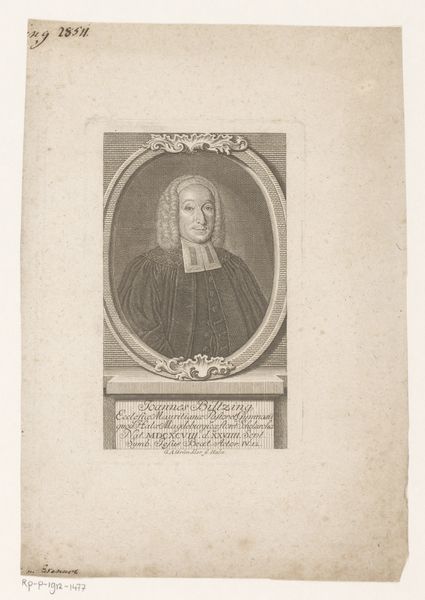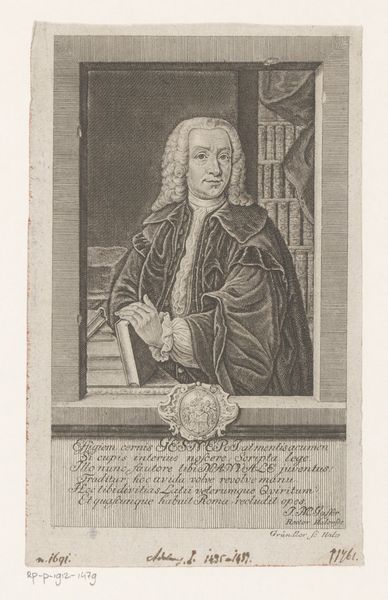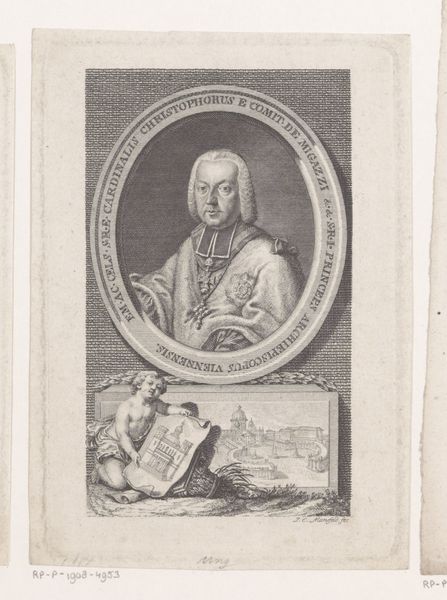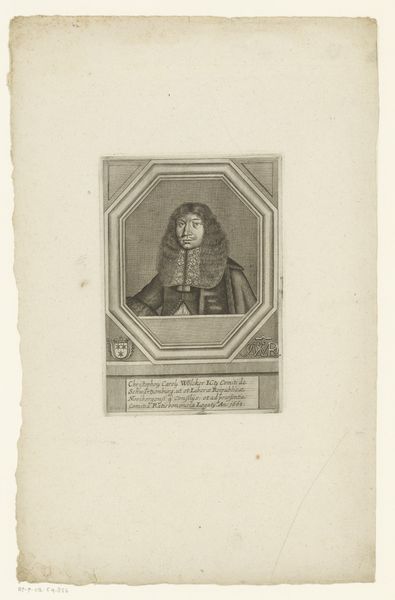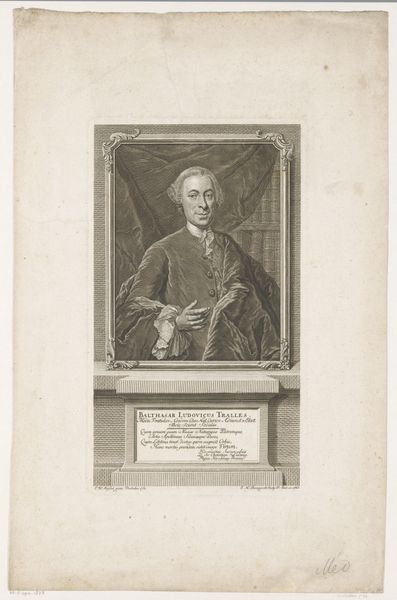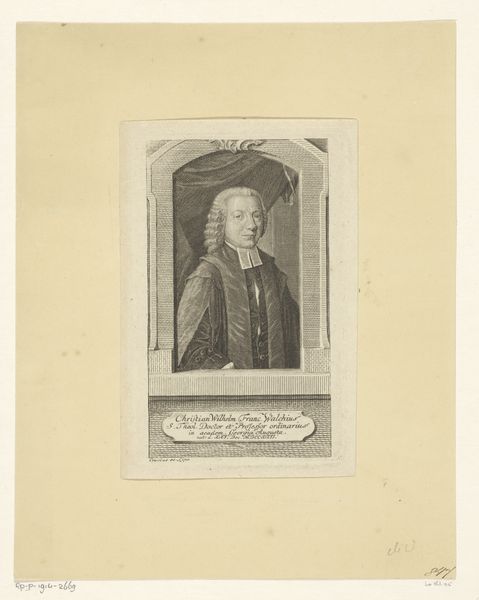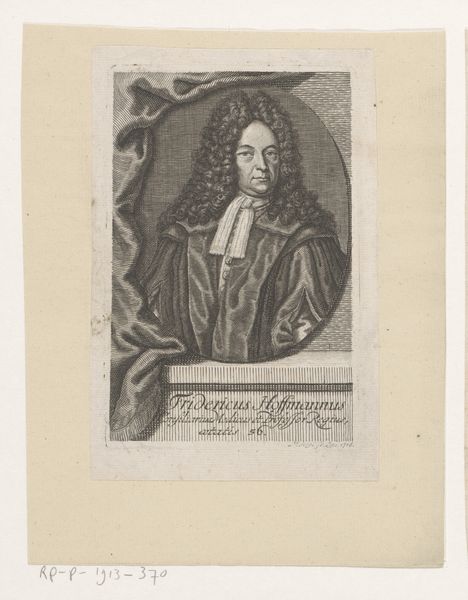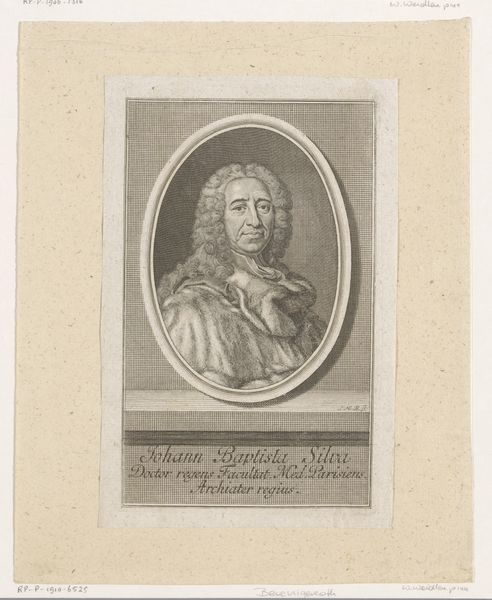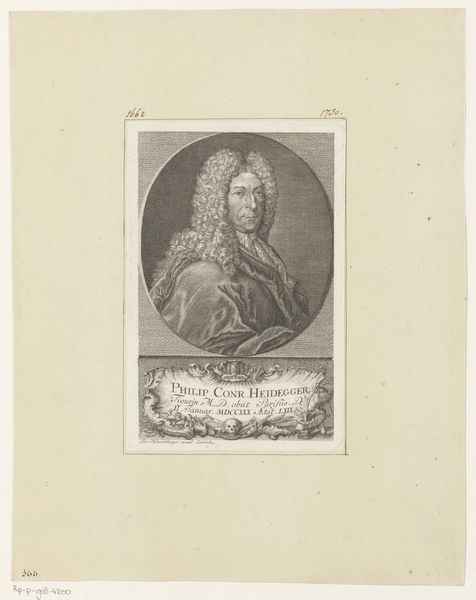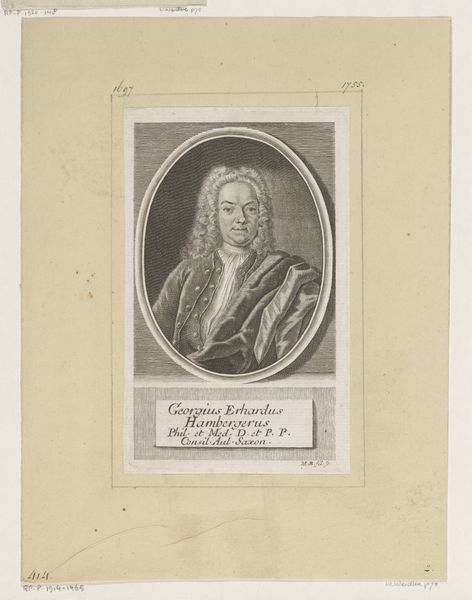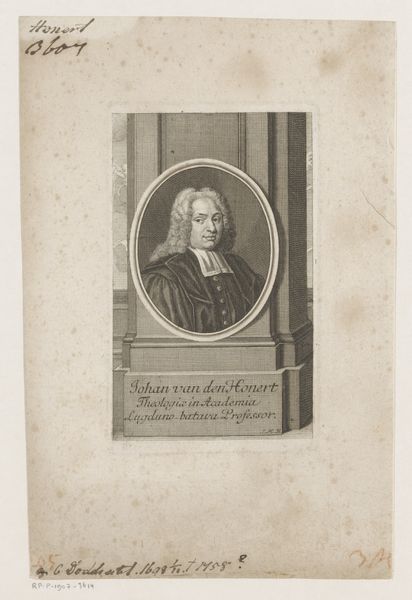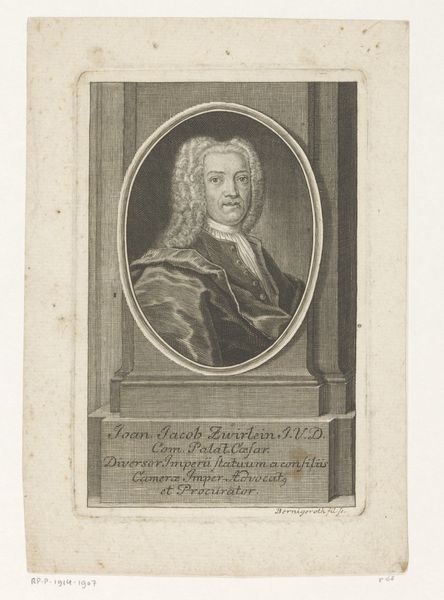
print, engraving
#
portrait
#
baroque
# print
#
old engraving style
#
history-painting
#
engraving
Dimensions: height 158 mm, width 95 mm
Copyright: Rijks Museum: Open Domain
Curator: Looking at this print, I’m struck by its somewhat severe formality. The subject is posed stiffly, despite the slight curve of the draped fabric, a testament to the artist’s attempt at naturalism in portraiture, even though this goal is not fully realised. Editor: Indeed, this formal style, typical of the Baroque period, tells us a great deal about how social standing was visually asserted. This work, created around 1740, is entitled *Portret van Heinrich Christian von Senckenberg*, made by Johann Martin Bernigeroth, here at the Rijksmuseum. Senckenberg’s robe, those subtle, intricate patterns, is less about him than it is about projecting wealth and power. It becomes less a question of character and more about how we read those class structures in society. Curator: But is it only about wealth? I read his gaze as deeply connected to his intellectual life, particularly as a councillor to a regal prince, positioned as he is alongside his library and personal effects. He would be very involved in philosophical and scientific life; his wig the standard fashionable and social uniform, which in today's standards might translate as conformity, but during the Baroque would have translated to high standards of scholarship. Editor: While I understand your reading, it is still imperative that we view it as a deliberate act. A person in that historical time and place made the conscious decision to look like this. The context demands it. What we might see as a personal mark of individuality has to be re-evaluated against social expectations of status, politics and representation. Bernigeroth uses engraving to portray that high position, and does not portray an image of a man reflecting, so we are pushed further away from any possibility of reflection as onlookers ourselves. Curator: A tension, then, between the individual and their role? We see an example of print as a medium and social history entwined, don't we, with Johann Martin Bernigeroth playing with Baroque tradition to immortalize the image of a powerful and important person? Editor: Exactly. This work reminds us how crucial it is to decode those signals within their historical setting in our attempt to assess these artworks and challenge conventions around identity as much now as in the past.
Comments
No comments
Be the first to comment and join the conversation on the ultimate creative platform.
